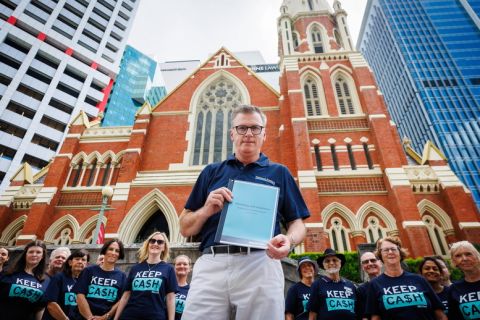Fresh call for more housing choices
The housing industry agrees there’s a need to build better for older Australians and their families.

Keeping it in the family
Some cashed-up seniors are solving their children’s housing affordability problem and their own downsizing needs by selling the family home at discounted rates to their children.
The Australian Financial Review reports that parental financial support has increased about fivefold in the past five years, assisting about 60% of first-home buyers.
Other strategies used by parents include large cash contributions, building backyard granny flats or extending the family home, and letting kids live at home while they save.
However, legal experts warn of ethical, legal, tax, and financial problems that could not only jeopardise the parents’ own financial futures but cause rifts with their children and among siblings.
Government superannuation incentives to downsize without affecting the age pension can be found here.
Australia is facing a shortage of suitable housing for seniors who want to remain independent and continue living in homes that meet their needs.
However, government planning and building industry priorities continue to deliver one-size-fits-all housing across the community.
A lack of suitable housing choice leads many older people to stay put in a family home that is too big, too expensive to maintain, and unsafe.
Rather than a pathway to a happy life in retirement, housing becomes a barrier.
National Seniors Australia has been calling for reforms to change the way Australia builds homes, with greater priority given to enabling seniors to move into age-friendly housing.
It is encouraging that a major industry provider of seniors’ accommodation in South Australia has supported the need for more suitable housing, including more apartments, single-bedroom homes, and long-term rentals.
The need for more suitable accommodation is acute in South Australia, which has an older population than the national average and a higher proportion of people in almost all age groups over 45.
ECH, a not-for-profit aged-care services provider, is calling for Adelaide's housing mix to broaden beyond the traditional quarter acre-block, and for the easing of planning and other barriers to overcome tight rental and real estate markets.
The charity’s chief executive, Claire Scapinello, has urged a shake-up of development law to enable older people to downsize in the areas where they already live.
She pointed to areas in Adelaide where current residents “would like to live in apartments or something smaller [but] there actually isn’t necessarily the availability for them to do that”.
This was because current laws did not allow the development of smaller housing or retirement villages in those areas.
Ms Scapinello said long-term rental leases, stretching over many years such as those in Europe, would help keep older people in secure, affordable housing for longer.
“If you’re an older adult, and you have a lot of your existing funds tied up in a home, sometimes releasing that and then having a rental option for a long-term, guaranteed rental still gives you that security and housing but actually it frees up available capital for you,” she said.
Property developer Walker Corporation has said it wants more flexible planning codes so it can fulfil a growing demand for seniors who want to live in smaller accommodation near where they raised their families and have established social connections.
A major focus of the National Seniors Better Housing campaign, as well as our 2024 Federal Budget recommendations, is the building of more affordable and suitable rental housing for seniors and better support for downsizers.
National Seniors’ own research found that diminishing affordability and lack of age friendly housing are two key issues facing older homeowners.
National Seniors has argued previously that planning laws need reform to encourage age-friendly housing in existing neighbourhoods where older people currently live.
Not everyone is interested in making a sea change or living in retirement villages in outer suburbs or in high rise buildings in the inner city, but these seem to be the only new options that are being built. Jurisdictions, such as New South Wales, are trying to encourage medium density housing to give greater choice in existing areas but these options can often be thwarted by local government restrictions.
Sensible planning reforms that protect the character of local communities but improve housing options for older people are desperately needed.
Building rental housing for older Australians and supporting the construction of accessible housing will give people more choice and delay entry into aged care.
We’re lobbying for home care recipients over 80 to be able to downsize without it affecting their pension, which will enable them to stay out of residential care.
National Seniors is also calling for stronger protections for consumers under retirement village laws to make this type of housing more attractive. All governments should be working together to harmonise retirement village legislation as this will reduce compliance costs and allow retirement village operators to operate more efficiently across state and territory borders.






